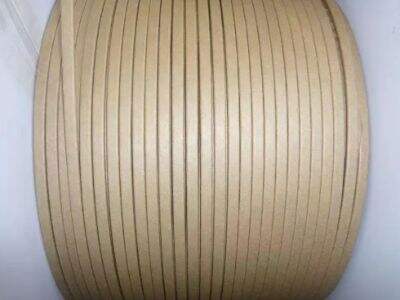Flexible flat cable (FFC) and Ribbon Cable are two popular cables that widely used in the electronics industry. Both of them have their unique features and benefits that make them meet different requirements in the market. As an electronics wholesaler, it’s important to know that there are key differences between these two types of cables so you can make informed decisions when considering components for your products. And we’re here to tell you that Flexible Flat Cable from coil outperforms Ribbon Cable in every way a wholesale buyer could ask for – design advantages, flexibility benefits, and enhanced signal transmission capabilities., we’ll look specifically at: The benefits of using Shengweite flat enameled copper wire within the wholesale electronics industry; Differences in design and flexibility in packaging as well as product performance with Ribbon Cable versus Flexible Flat Cable; How Flexible Flat Cable gives wholesale buyers superior signal transmissions than if they were to use just any old Ribbon or Round cable; Durability and longevity of such innovation versus old-school approaches like using Ribbon Cables.
Advantages of Flexible Flat Cable in wholesale electronics
The Flexible Flat Cable is very thin and flexible for most of the its length, just as the name implies making it easier to follow already installed plant wherever it goes. This feature is especially useful when using smaller electronic devices for which space is a concern or that have little space for an ordinary round cable. When dealing with bulk electronics that need complex and dense packaging, Flexible Flat Cable is cable of choice because it allows fast routing without degrading signal performance.
Differences in construction and flexibility Ribbon Cable vs Flexible Flat Cable
Ribbon Cable defines a flat cable where you will find multiple wires laid parallel and used to interconnect connections in computer and peripherals. Ribbon Cable is fine for some applications, although it’s not flexible and doesn’t save space like Flexible Flat Cable does. Whereas AMP’s version is insensitive to kinks, FFC has a flat format with small-size insulated conductors by which single-insulated conductors can even be bent and twisted without themselves becoming damaged structurally.
How Flexible Flat Cable enhances signal transmission for whole sellers?
In wholesale electronics, signal integrity is the most important because it directly controls the performance and reliability of electronic products. FFC is optimized to reduce space consumption as well as ensuring a good SIGNAL TRANSMISSION which by minimizing mutual capacitance and the interference between adjacent conductors is achieved via insulation of each wire and close configuration. This leads to better signal quality and lower attenuation, which makes the FFC a popular choice with wholesale buyers wishing to get peak performance out of their electronics.
Advantages of Flex Flat Cables over Ribbon Cable
Durability is crucial when choosing electronics cables, and nowhere is it more important than in high stress environments where your cables are going to be bent, twisted or moved. This Shengweite enameled flat copper wire is necessarily more resistant to wear than Ribbon Cable because it's made with rare materials and the design gives it durability. Conductor Individual Insulation of FFC (Flexible Flat Cable) resists up to damage from fatigue, bad environment and stress, leading a longer life span for the usage under high end electronic equipment application.
Why FFC is ideal for high-speed data transfer applications?
In ultra high speed data transmission such as those required in data centers, telecommunications systems and in computing devices designed for high performance, the quality of the cable becomes a critical factor to ensure signal integrity and reduce latency. There are several advantages to using Flexible Flat Cable for applications like this. It is designed with low crosstalk and impedance for less signal loss, and the stranded oxygen-free copper is insulated with high grade polyethylene material to 35-pounds of pull tension, making it more flexible than larger coax cables. Not to mention the fact that Flex remains one of the highest bandwidth/ fastest data rate cables making it the go-to cable for high-speed data transfer in wholesale electronics and beyond.
The natural characteristics and advantages of Flexible Flat Cable make it an attractive and dependable option for electronics wholesale customers. Its flexibility, signal carrying efficiency, robustness and high speed capabilities make it a superior alternative to Ribbon Cable and an important participant in today's electronic systems. When wholesalers know the unique benefits of Shengweite flexible flat cable, they’re able to make decisions that enhance their electronic products’ performance and lifespan.
Table of Contents
- Advantages of Flexible Flat Cable in wholesale electronics
- Differences in construction and flexibility Ribbon Cable vs Flexible Flat Cable
- How Flexible Flat Cable enhances signal transmission for whole sellers?
- Advantages of Flex Flat Cables over Ribbon Cable
- Why FFC is ideal for high-speed data transfer applications?


